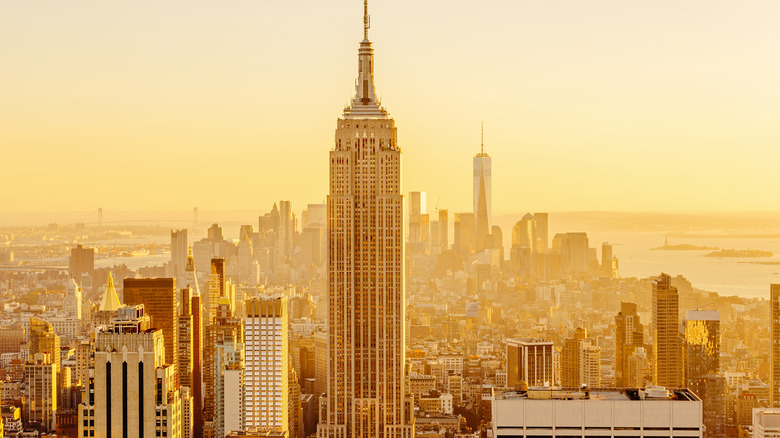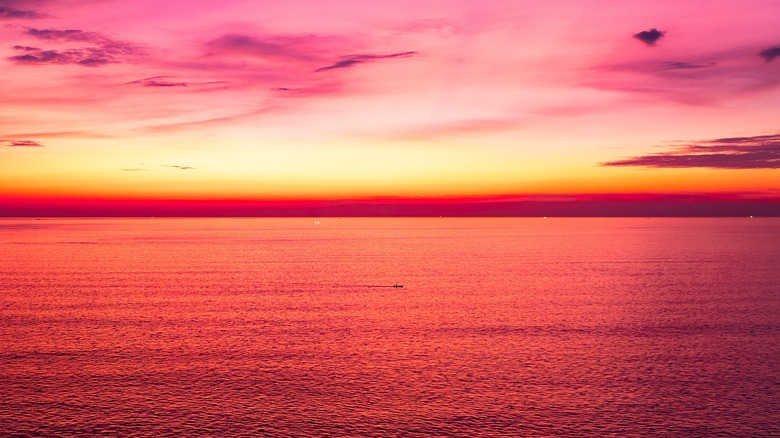Why Does The Sky Look Yellow And What Does It Mean?
Weather conditions change the sky. As long as the weather is right, you can see almost any color in the sky, even if just for a brief moment. At night, beautiful colors floating in the sky is something highly sought after — in fact, the Northern Lights, might be visible often in the upcoming years. However, the colors people most associate with the sky are the bright blue of a clear day and the gray of the clouds. That's why, when the sky changes to something different, like yellow, green, or red, it can be unsettling.
Thankfully, the reason the sky changes to yellow is something easily explained, even if it's a little unusual. You might not see yellow skies often, but that doesn't mean it can't happen. Thunderstorms, especially severe ones, can make the sky an unusual yellow or green-yellow color.
That's not the only reason a sky would turn this color. In addition to severe thunderstorms, poor air quality, wildfires, and pollution also change the color of the sky to have a somewhat yellow tint. For example, a severe wildfire may make the sky an orange-yellow color. The reason for all of these magical colors comes from something everything on the Earth depends on to survive: the sun. The sun gives the Earth heat, warmth, and nutrients, and can even help you find your way out of the woods if you get lost. It's also the reason the sky usually looks blue, and can potentially be other colors.
Why the sky changes colors
So how does the sky change from blue to yellow just because of a storm? It's actually the clouds that do it. Smog, smoke, and severe thunderclouds help to scatter the light.
The sky is originally blue because the sun provides white light. When that white light passes through the atmosphere, colors start to scatter. Colors with the longest wavelengths, like red and orange, don't scatter quite as much. However, those that have shorter wavelengths, like blue, spread further. This makes the sky appear blue more than any other color. This is also why sunsets are typically more orange, pink, and red. During these times, light has to travel further through the atmosphere, so the colors seen better are the ones that don't scatter as much.
But storm clouds change the way the light moves. It blocks certain light from getting through, and helps the yellow light scatter more, making it more visible to the human eye. So generally, if you see a yellow or green-yellow sky, it can act as a warning that a large storm is coming, or that one has passed. In the safety of your home, storms can be quite beautiful. However, if you're outside when you see this yellow color, you may be in for quite a night, which is why if you're camping, you may want to know how to protect yourself during a storm.

